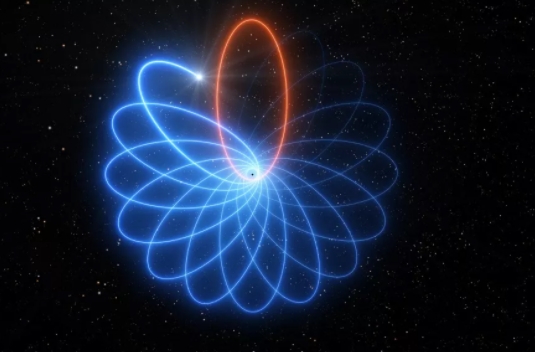What’s the most amazing thing about the universe?

Perhaps the most powerful aspect of physics — and indeed perhaps the most amazing thing about the cosmos as a whole — is the universality of physical laws and theories.
A few scant equations — small enough to fit on your favorite T-shirt — can explain a variety of phenomena from one edge of the universe to the other, and from the earliest moments of the Big Bang to the unfathomable future. Let’s get a taste for just how powerful modern physics can be.
Games of gravity
Albert Einstein’s general theory of relativity is our modern theory of how gravity works: matter and energy bend space-time, and in turn the bending of space-time tells matter how to move. The math is a bit complex: it takes a suite of 10 interrelated equations to describe all this bending and warping and moving. But those equations contain enormous power.
For example, in the limit of weak gravity, Einstein’s equations reduce to the more familiar expressions of Newtonian gravity, which is used to explain everything from the trajectories of thrown baseballs to hydroelectric dams. Beyond the surface of the Earth, Einstein takes more control, where the equations of relativity are used to provide accurate positioning with the GPS system and precisely predict the orbits of all the planets.
Those very same equations, without a single modification, go on to greater feats, revealing the existence of black holes and their workings, the growth of the biggest structures in the universe, the presence of dark matter inside galaxies and the Big Bang itself.
All of that from a set of 10 equations, spanning both cosmic space and cosmic time — indeed, showing that the universe has a finite age in the first place.
Nuclear energies
When physicists began to crack the nuclear code in the 1940s, they had no idea that their machinations would end of unlocking one of the most perplexing mysteries of astronomy: how stars work. Prior to this time, scientists had tried all sorts of attempts to reconcile the age of the Earth as revealed by geology and paleontology (billions of years) with all the known physical ways to keep the sun burning so brightly. These attempts, as a rule, failed quite miserably, with even the best explanations only reaching a few million years.
But nuclear physics was a whole new ball game, and once physicists figured out the conditions necessary to ignite nuclear fusion (namely, insanely high pressures, temperatures, and densities), they realized that such conditions aren’t always human-made (inside nuclear bombs and reactors) but can be found in nature itself: in the hearts of stars.
Nuclear fusion of hydrogen is how stars power themselves for billions of years, and the equations that physicists use to understand that process are the exact same ones they use to turn nuclear reactions into usable energy. From the tiniest of atoms to the largest of stars, nuclear physics — a relative newcomer in the world of physics — unites the cosmos in a surprising way.
Laws of motion
But you don’t have to use esoteric equations of relativity or complicated calculations of nuclear reactions to discover the universality of physics. It can be as simple and straightforward as, say, a car crash.
When two vehicles collide, the laws of conservation of energy and momentum apply: the total amount of energy and momentum before the collision must equal the total amount of energy and momentum after the collision. Using these simple statements, investigators can reconstruct the scene of the accident, figuring out which driver was at fault and what led to the collision.
And cars aren’t the only thing in the universe that smash together.
Colliding stars. Merging galaxies. Mixing gas clouds. It’s rare to find a paper in astronomy or physics that doesn’t mention, in some way, the conservation of energy and momentum. Scientists use these principles to understand just about everything in the cosmos.
Why is that gas cloud radiating energy? Conservation of energy and momentum. Why is that neutron star changing its rotation speed? Conservation of energy and momentum.
What will happen when those galaxies collide? Conservation of energy and momentum.
The next time you get in a car accident, take a moment to think about momentum, and how it applies throughout the universe, wherever you are.



 Creators of mankind
Creators of mankind Description of “Tall white aliens”
Description of “Tall white aliens” Where they came from?
Where they came from? About hostile civilizations
About hostile civilizations The war for the Earth
The war for the Earth “Tall white aliens” about eternal life
“Tall white aliens” about eternal life Video: “Nordic aliens”
Video: “Nordic aliens” Aliens
Aliens Alien encounters
Alien encounters The aliens base
The aliens base UFO
UFO Technology UFO
Technology UFO Underground civilization
Underground civilization Ancient alien artifacts
Ancient alien artifacts Military and UFO
Military and UFO Mysteries and hypotheses
Mysteries and hypotheses Scientific facts
Scientific facts


















